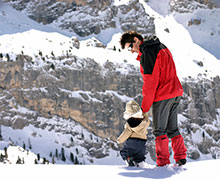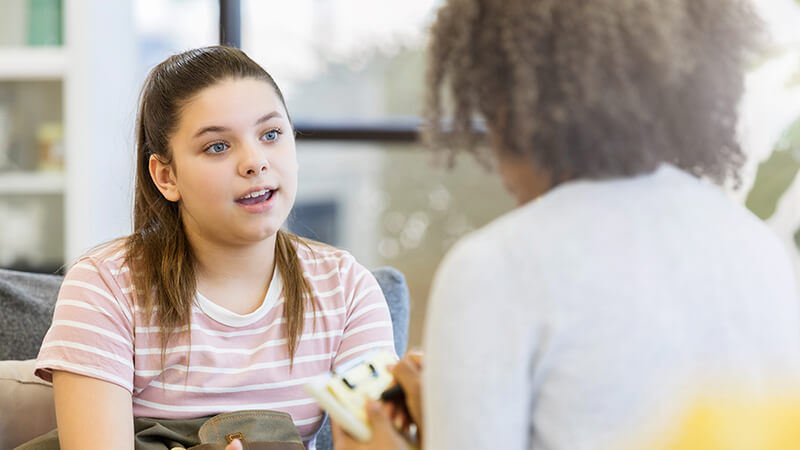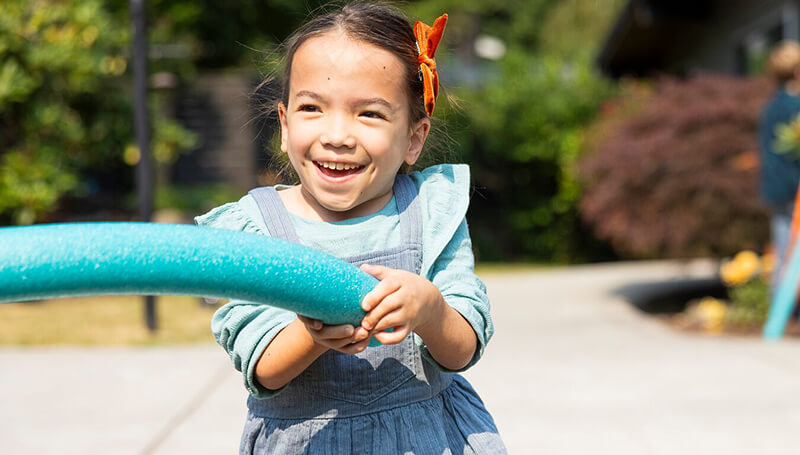Winter Safety Tips
You can download this article as a PDF (English, Spanish).

Winter is here, and with it the rain, snow and ice. Keep your family safe and warm with these safety tips.
At Home
- Install smoke alarms in every sleeping area and on each level of your home. Test smoke alarms once a month, and change batteries at least once a year. A good time to change batteries is when you change your clocks in fall and spring.
- Install carbon monoxide alarms in every sleeping area. Carbon monoxide (CO) is a gas that you cannot see or smell. It is produced by many appliances, such as furnaces, dryers, ranges, ovens and heaters. When appliances work right, they vent CO to the outside. If they break, they can leak CO into your home. Breathing CO can cause death. At first, a person with CO poisoning feels dizzy and sick to their stomach. A carbon monoxide alarm will go off so there is time to leave your house before you feel sick.
- Give space heaters space. Keep them at least 3 feet away from walls, furniture, curtains, bedding and clothing. Children and pets should not play around heaters, fireplaces or wood stoves
- If you use kerosene heaters, use only kerosene for fuel – never use gasoline.
- Add fuel outdoors and only when the heater is cool. Always keep a window slightly open when the heater is running.
- If you use a fireplace or wood stove, have your chimney checked and cleaned by a professional once a year. Use a fireplace screen, and burn only untreated wood. Make sure your wood stove has a fireproof stove board under it to protect the floor from heat.
- Tell everyone in your home to wash their hands often, especially if they or other family members are sick. All people 6 months and older should get the flu vaccine each year.
Protection for the Outdoors
- Children get cold faster than adults. Dress your child in layers to protect them against the cold. Begin with a bottom layer made of nylon or silk that will wick away moisture (avoid cotton). Make sure they wear a warm hat, mittens or gloves, a scarf, socks and nonskid boots. Choose bright colors so drivers can see them better.
- Give your child a snack before going outdoors. It gives them energy. Bring them indoors for breaks about once an hour to warm up and drink fluids.
- Protect your child's eyes from harmful sun rays with goggles or sunglasses.
- Apply sunscreen and lip balm to protect your child from sunburn.
- Remember: Children lose body heat quickly, especially very young children. Check on your child often when they are playing outdoors. Replace wet clothes with ones that are warm and dry. If you see white patches of skin on their hands, feet or face, bring them indoors right away. This is the first sign of frostbite. Call your doctor right away.
Winter Play and Sports
- Insist that your child wear a properly fitting snow sport helmet while skiing, snowboarding and sledding. Snowboarders need wrist guards in addition to helmets. If your child doesn’t have a snow sport helmet for sledding, they can wear a bike helmet. Be a good role model by wearing your helmet, too.
- Make sure an adult is with children who are sledding. Keep sledders away from trees, rocks, fences and cars. Check sleds for jagged, sharp edges. Teach your child how to roll off the sled and how to stop the sled if they need to get off quickly. Also teach them to sled sitting up with their feet in front.
- Never hook a sled to a car or any other vehicle. Never pull your child on skis or a snowboard behind a vehicle.
- Children who ski or snowboard are safer and have more fun if they take a lesson from a qualified instructor.
- Make sure ski and snowboard equipment is the right size and is adjusted properly.
- Teach your child to ski and snowboard within the boundaries of the ski area.
- If your family spends time in the backcountry, take an avalanche safety course and always carry avalanche gear while in the backcountry. Never be in the backcountry alone – it's safer to be with a group.
- Know how to operate a snowmobile before going snowmobiling with your child. Start with a full tank of gas. Have all riders wear protective gear, including helmets with chinstraps. Be alert to other snowmobiles. Avoid unsafe areas like thin ice and steep, avalanche-prone slopes. It is a good idea to snowmobile in groups.
Be Prepared
- Make an emergency kit for home. Include extra blankets and clothing, flashlights, batteries, matches, a first aid kit, a can opener, jugs of water, medicines and canned food and other foods that do not need refrigeration.
- Prepare a kit for your car that includes flares, tire chains, a flashlight, a scraper, water and food (like energy bars), a first aid kit, blankets and gloves.
- Be sure that you have a way to heat your home or a place to go in case the power goes out. Always keep a fire extinguisher near your heating source. Never use your cooking stove or range to heat your home. Do not use a charcoal grill, hibachi or generator in your home, either - they make carbon monoxide, which is a poison.

